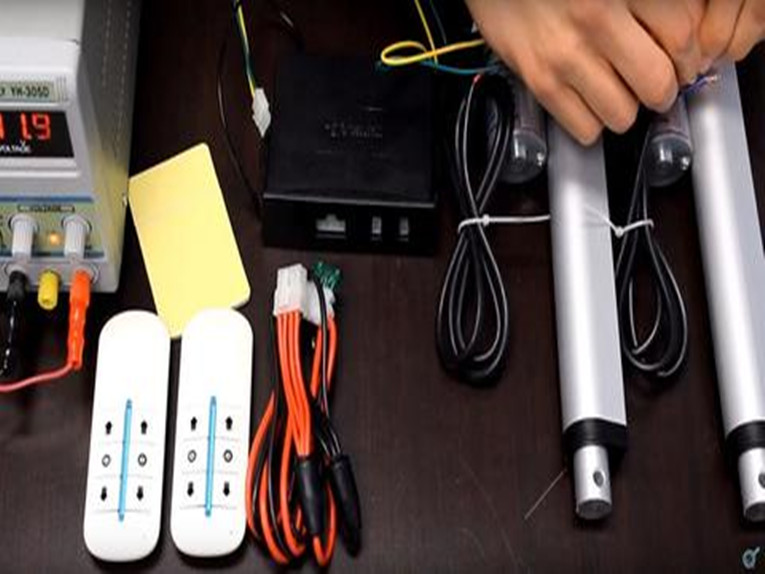
Linear actuators are typically characterized by their drive mechanism – belt drive, ball or lead screw drive, pneumatic drive, etc. But it’s not unusual for rod style electric actuators to be classified by the input voltage – commonly 12 or 24 volts – of their integrated motors. These actuators provide thrust force, much like a pneumatic or hydraulic cylinder. In fact, rod style electric actuators are widely used to replace pneumatic or hydraulic cylinders, due to their simplicity and the potential cost savings that can be realized by switching from fluid power to electrically driven motion.
Design
As the name implies, a 12 volt linear actuator includes a 12 volt DC motor, integrated into or tightly coupled with the actuator body. 12 volt actuators are driven almost exclusively by one of two mechanisms – a ball screw or a lead screw. And most designs incorporate gearing or use a gear motor to optimize the thrust and speed characteristics of the actuator. The most basic design includes a limit switch at each end of the stroke, meaning that the actuator fully extends and retracts, with no intermediate positioning. However, most manufacturers offer programmable limit switches as an option, for intermediate positioning capabilities.
Because these electric rod-style actuators are often used to replace hydraulic or pneumatic cylinders, some of their basic design features follow the precedents set by the other technologies. Mounting is a good example. A 12 volt linear actuator is typically mounted in the same manner as a pneumatic or hydraulic cylinder, with most having both clevis and trunnion mounting options. In some 12 volt linear actuator product lines, you’ll find body sizes and mounting options that meet ISO, NFPA, and other standards, which makes the conversion from a pneumatic or hydraulic actuator to an electrical actuator much simpler in existing applications.
Performance and selection
One of the most crucial differences between rod style and slider type actuators is that rod style actuators provide only thrust force. Their primary use is for pushing and/or pulling a load, via a tube or rod that extends and retracts from the actuator. While a plain bushing guides the rod, there are no linear guides to support and carry the load. In most applications, support and guiding for the load is provided by tracks or rails independent of the actuator. This operating principle explains why these actuators have several different monikers, including “electric cylinders,” “thrust type actuators,” and “rod style actuators.”
Sizing and selection of a 12 volt linear actuator is fairly straightforward, since the motor is pre-selected and integrated into the actuator. The first parameter to be considered is typically thrust, as it will often dictate the overall body size of the actuator. Next is stroke length, since a small actuator may meet the thrust requirements, but may not be able to achieve the necessary stroke length.
With an initial actuator selection based on thrust force and stroke, the speed and duty cycle requirements can then be checked. The allowable force and speed combinations are typically provided by the manufacturer, in the form of a performance curve or chart. Once it’s confirmed that all other parameters are within the actuator’s capabilities, it’s important to check the required duty cycle, or “on time,” since motor heating can be a limiting factor for the actuator’s performance.
Suitable applications
Virtually any time a load needs to be pushed or pulled, without being guided or carried, a rod style actuator is a good choice. This includes opening and closing sliding doors in applications such as rail cars and machining centers. In the medical industry, 12 volt actuators are often used for ergonomic positioning of work tables or patient beds.
In conveying operations, these actuators are commonly used to stop or divert product along the conveyor, depending on the process requirements. And because they’re fully enclosed and available in IP-rated or hygienic designs, rod style actuators are well-suited for the pharmaceutical and food and beverage markets, where purely thrust operations – such as inserting, labeling, or stamping – are typical.
Post time: Dec-22-2021







